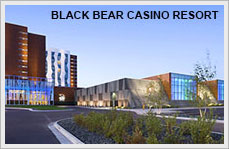Wetland Function and Value
A wetland function is a physical, chemical, or biological process of a wetland; something a wetland does. An example of a physical process function could be flood retention, a chemical process function could be water quality protection, while a biological process function example could be wildlife habitat. A wetland value differs from a function in that a wetland value is a desired outcome as a result of a wetland function. This value often is accompanied by a judgment that a given function provides a financial, educational, cultural, recreational, or aesthetic benefit.
Water Quality Protection – Wetlands filter out sediments and toxins from storm water. When wetlands are degraded or destroyed, water quality downstream can suffer. This function is especially important for wetlands adjacent to streams and lakes. The water quality functions of wetlands include numerous chemical, biological, and physical processes. When any of these processes are disrupted sufficiently to change the character of the wetland, the wetland water quality is diminished. Wetlands can significantly reduce impact from several pollutants through the natural processes of adsorption and entrapment. Background levels of nutrient assimilation by wetlands can reduce excessive plant growth in downstream lakes, rivers, and wetlands. The nutrients of principle concern are phosphorus and nitrogen. Common sources of nutrients are urban storm water and runoff from cultivated fields and feedlots. Forested wetlands retain ammonia during seasonal flooding and wetland environments are effective in denitrification. Wetlands take up metals both by adsorption in the soils and by plant uptake via the roots. They also allow metabolism of oxygen demanding materials and can reduce fecal coliform populations. These pollutants are often buried by deposition of newer plant material, isolating them in the sediments. When the narrow channel of a stream widens into a wetland, stream velocity slows. This allows the sediments to drop out and settle in the wetland. However, excessive sediment deposition resulting from artificially conveyed waters discharged into wetlands or erosion form bare soils adjacent to wetlands can smother wetland benthic organisms which adversely impacts wetland functions. It should also be noted that it is possible for sediments to be re-suspended causing increased turbidity in wetland waters which are typically very clear as sediment settling does not necessarily mean it is permanently stabilized.
Flood and Storm-water Retention – Wetlands holdback waters from continuing downstream causing damage to property. This function’s level is based upon wetland characteristics such as vegetation and water inlets and outlets; adjacent land uses including land cover in the watershed of the wetland; and the wetland’s location within the watershed. Obviously, a wetland further downstream in the watershed will receive more flood or storm water than a wetland more upstream.
Wildlife and Fish Habitat – Wetlands provide a place not only for wetland plants, but also feeding, nesting, breeding, and shelter for wildlife and fish. Wildlife refers to all animal species, including mammals, birds, reptiles, amphibians, and invertebrates that depend on or utilize wetland habitats within the area in which a given wetland is located. It should be noted that all wildlife species are ecologically important and that low species diversity is not necessarily a sign of poor wildlife habitat. Some wetland types naturally support a lower diversity of wildlife species or numbers. Generally, the value of a wetland for fish habitat is related to its connection with deepwater habitats.
Shoreline Protection – Wetlands along the shores of lakes, steams, or open water basins protect the shoreline by absorbing erosive forces in regards to wind wave action, boat wakes, incompatible land uses, or unstable soils. The degree to which a wetland provides this function is a direct result of the type of vegetation in the wetland. Emergent or submerged wetland plants are capable of decreasing wave energy in the “wash zone” of lakes. Dense rooted wetland plants are also capable of reducing the erosive forces of ice flows. Densely rooted shrubs can also provide upper bank stability.
Groundwater Interaction – Wetlands can recharge groundwater areas or discharge from groundwater areas. Groundwater supported wetlands have the discharge of groundwater as their primary function. Surface-water supported wetlands have the recharge of groundwater as their primary function.
Aesthetic, Recreation, Education, Cultural and Science – Wetlands provide valuable opportunities for pleasing views, recreational opportunities, cultural resources, educational benefits, and scientific research. This function is dependent, in part, upon the wetland’s visibility and accessibility. In some ways this could be a “Catch-22” situation. A wetland’s proximity to a population center may increase its perceived importance. However, proximity to population centers and locations in public areas may have associated noise and/or pollution factors that could degrade the wetland’s values.
Commercial Uses – Wetlands can produce commercially viable crops such as wild rice or cranberries. This includes wetlands that provide not only commercial crops or agricultural commodities, but also non-commercial consumptive uses.








